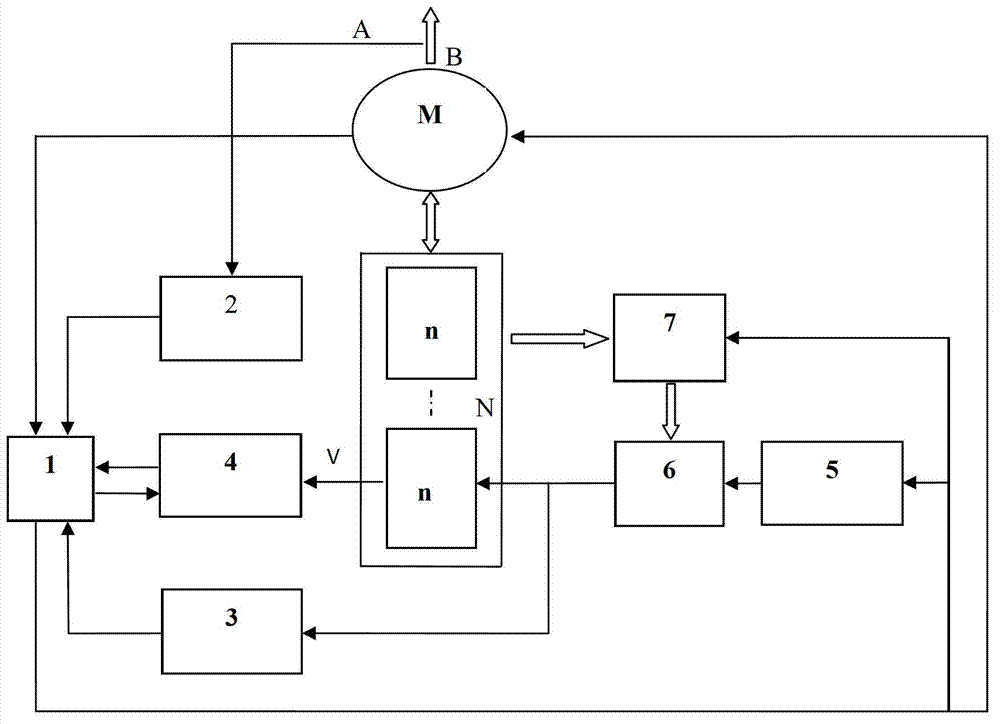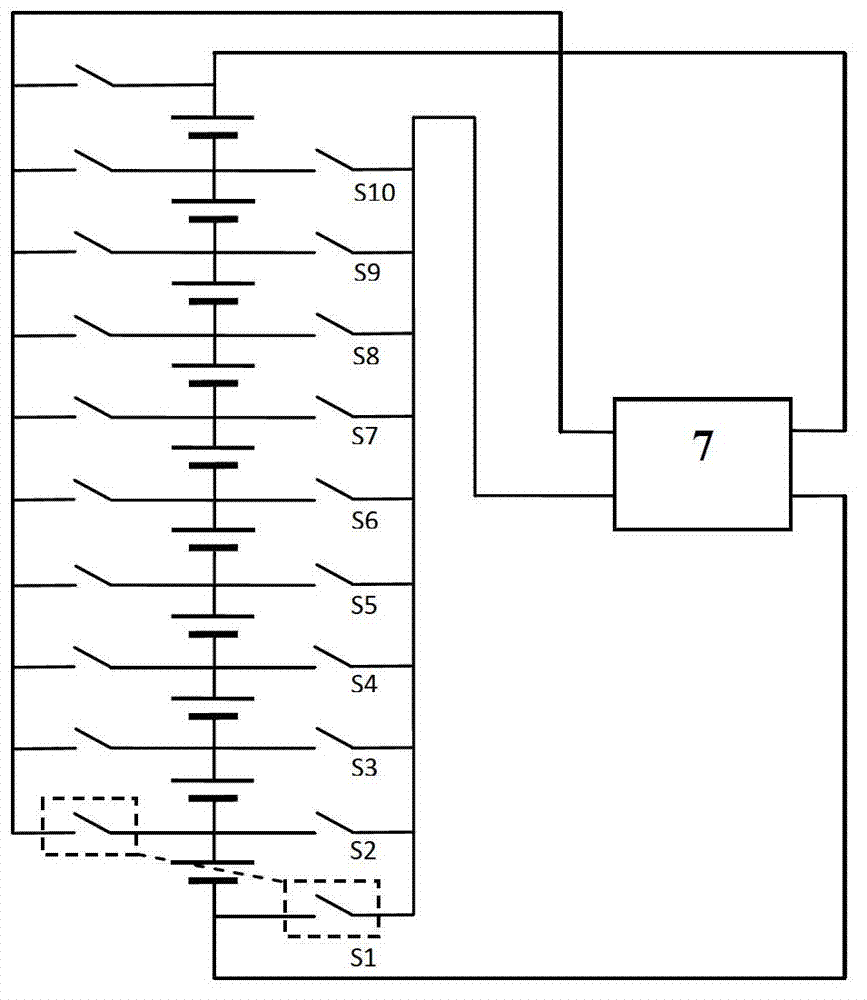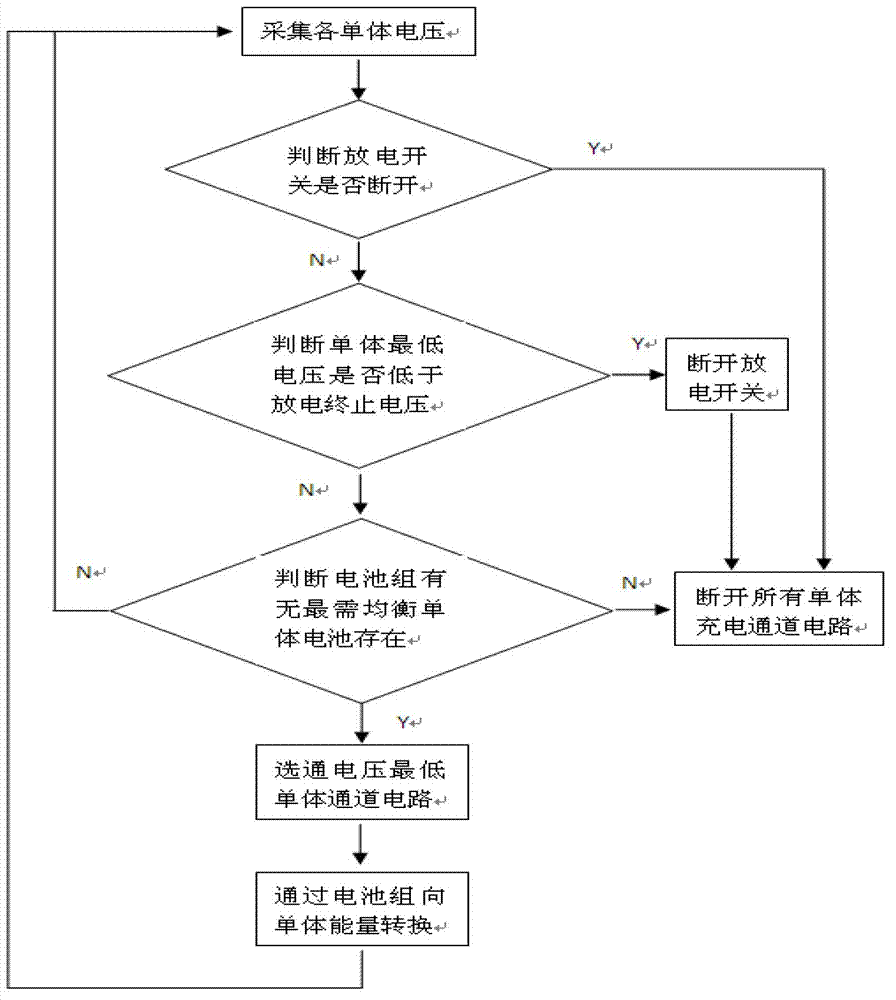The shortcomings of the above charging
equalization circuit are as follows: 1. The shortcomings of using parallel resistors for charging and
shunting to realize charging
equalization: it belongs to the energy dissipation type, and there are energy waste and thermal management problems; 2. The main / sub charging unit is used to charge separately. Disadvantages of charging equalization: each single battery needs a separate charging module, resulting in complex circuit structure and high cost; 3. Disadvantages of using coaxial coils for energy conversion to achieve charging equalization: each
monomer All batteries need a secondary winding, which is costly, and the use of coaxial coils for energy conversion has a certain amount of energy dissipation. In
actual use, the circuit structure is complex and not suitable for cascading; 4. Use
relay switching signals for energy conversion. Insufficiency of conversion to achieve charge balance: each single battery corresponds to two
relay switches, resulting in too large a charge balance circuit, and spark oxidation is likely to occur when the
relay switch is switched, resulting in an increase in the contact
internal resistance of the switch contact and
power consumption Larger, the energy supplement is realized by the
inverter power supply circuit, the cost is high, and the circuit realization structure is relatively complicated
Disadvantages of using the main / sub-
discharge unit to discharge separately to achieve discharge balance: each single battery needs a separate discharge module, resulting in a complex circuit structure and high cost; in summary, the discharge balance method is used in battery packs. It can be used in the early stage. In the case of large changes in battery performance in the later stage, during the charging process, the charging voltage of the battery with a large
internal resistance of the single battery will be higher than that of other batteries, thus increasing the possibility of overcharging.
[0012] The deficiencies of the above dynamic equalization circuit are as follows: the shortcomings of the first three points have been stated in the above single equalization method, and the fourth point uses the inductive
energy storage element to realize the dynamic equalization circuit of the
energy transfer method.
Energy transfer between adjacent batteries, so there must be multiple transmissions during the equalization process, and the equalization time is long, which is not suitable for multi-string battery packs
[0014] Among them, the
Chinese Patent Publication No. CN201611789 discloses an equalization scheme for a
lithium battery pack
equalizer charger, which uses a main charging circuit and N single-string charging circuits to charge the battery pack at the same time. When the battery pack reaches a predetermined standard voltage, the main charging circuit The charging circuit stops working, and the N single-string charging circuits continue to charge the single-string batteries that do not meet the standard, until each string of batteries reaches the standard voltage. The
disadvantage of this scheme: it can only achieve charging balance, but not discharge balance. Purpose: Each single battery needs a separate charging module, which is unnecessary and the circuit is more complicated and costly to implement; there is no voltage collection for each single battery, and the balance of the single battery can only be based on experience, and the error larger
[0015] The
Chinese patent publication number is CN101643054B, which discloses an equalization scheme for an automotive power
lithium battery management
system. The management
system consists of a main control board and a protection board. The protection board is placed in each battery pack. The main control board and the protection board The purpose of balancing is achieved through CAN
network communication. The
disadvantage of this scheme is that the protection board in each single battery needs to be composed of a microprocessor, a CAN gateway connected to the microprocessor, and a dedicated protection
chip for lithium batteries. The cost of protecting the battery pack through this
hardware structure is relatively high. Compared with the
overcharge, overdischarge, and
overcurrent protection of the battery pack through
software, the
software implementation is more direct, simple, and low in cost. reliable and stable
[0016] The
Chinese Patent Publication No. CN102111005A discloses an equalization scheme for a non-destructive lithium battery equalization management
system and method. The
disadvantage of this scheme is that each
battery cell requires an equalization circuit and a single-
chip microcomputer, and each equalization circuit requires a separate Isolated transformer, the circuit structure is too large and the cost is high
[0017] The
Chinese patent publication number is CN202103447U. An energy-compensated lithium battery equalization controller discloses an equalization scheme. The scheme uses the coaxial coil method to use the energy of the entire battery pack to supplement energy for the battery cells with
low voltage in the battery pack. , the channel switching circuit is equipped with a high-frequency
isolation transformer structure for each
battery cell, that is, each
cell has a secondary winding. The disadvantage of this scheme is that it can only achieve charge balance, but not discharge balance. ;Each single battery needs a secondary winding, the cost is high, and there is a certain amount of energy dissipation when using coaxial coils for energy conversion. In the
actual use process, the circuit structure is complex and not suitable for cascading; Small (1% of battery pack capacity (AH)), slow equalization speed
[0018] The
Chinese Patent Publication No. CN101026307A discloses an equalization scheme for the automatic equalization method of
charge and discharge of series power lithium battery packs. In this scheme, each single battery is equipped with a
charge and discharge equalization
control unit, one-to-one control, parallel monitoring until the charging voltage When the set value is reached and discharged, it is found that a single battery is lower than the average voltage of the battery pack and exceeds the
lower limit, the
inverter circuit is activated, and the DC power of the battery pack itself is used to realize active
inverter to generate AC output. The modulation process outputs the AC
pulse width modulation signal, and then controls the power of the micro MOS tube to isolate the output through the transformer. After rectification and filtering, the single battery is recharged. The disadvantage of this solution: the charging balance is controlled by a one-to-one structure, and the functional structure is repeated. , not as flexible and simple as the one-to-many structure, each single battery needs an inverter power supply, the cost is high, and the circuit implementation structure is relatively complicated
[0019] Chinese Patent Publication No. CN201438493U discloses an equalization scheme for an equalization device for a vehicle-mounted
power battery pack. This scheme connects a
battery cell with a
high voltage to the input end of a DC / DC power converter through a polarity unit at the charging end. / DC power converter for energy conversion, the output end of the DC / DC power converter is connected to the battery
cell with a lower voltage through the polarity unit of the discharge end, and the battery
cell with a lower voltage is charged to realize the battery pack
Voltage balance, the circuit structure of this scheme is simple, and the control process is relatively simple compared with the above patents. The disadvantage: the energy supplement method is to convert the energy from the
high voltage of the single battery to the
low voltage of the single battery, and the conversion efficiency is relatively higher than that of the battery pack to the single battery The battery
conversion method is low, and the charging and discharging polarity switch is used to control the balance of the polarity of the single battery. Improper control may easily cause the
reverse connection of the two ends of the battery single battery, and the switch control amount is large
[0020] The
Chinese patent publication number is CN201438493U, which discloses an equalization scheme for a balance management device of a series lithium battery pack. Balanced adjustment of the
terminal voltage, the disadvantage of this scheme: the use of cascaded connected transfer switches increases the inconvenience and risk of control, that is, when charging the single battery n, it must be ensured that the front n-1 single batteries correspond to The transfer switches must be cascaded together, and the control is more troublesome. Once a fault or misoperation of an individual
transfer switch occurs, it is easy to cause the wrong selection of the balanced cell. In this way, the difference between the cells of the battery pack will be accelerated, and the balance will be lost. the goal of
[0021] To sum up, at present, domestic improved technologies or products for the voltage equalization management of power lithium battery packs cannot give full play to the performance of lithium battery packs. To give full play to the advantages of dynamic equalization, most of them simply combine the existing charge equalization and discharge equalization technologies, so there are still many problems left over from single equalization in the dynamic equalization circuit, and some of them use inductive
energy storage components The dynamic equalization circuit that realizes the
energy transfer method can only realize the
energy transfer between adjacent batteries, so there must be multiple transmissions in the equalization process, and the equalization time is long, which is not suitable for multi-string battery packs, and most of the dynamic equalization controls its The scheme is complicated, the circuit volume is large, the cost is high, and the practical application is difficult
 Login to View More
Login to View More  Login to View More
Login to View More 


